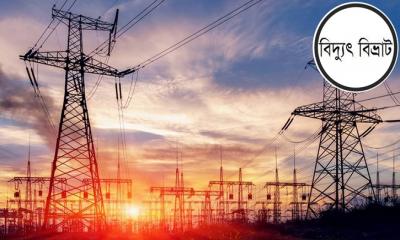
Power grid yet to be normal

The eastern part of the national power grid could not be made fully functional on Friday, three days into its failure on Tuesday, while frequent power outages kept disrupting the life in the capital city even on the first weekend day.
The demand for electricity becomes the lowest on every weekend because of less official and industrial activities but many city dwellers woke up sweating on the first day of their two-day weekend on Friday because of long power outage.
By Friday afternoon, there were several spells of power outage in all parts of the capital — each spell lasting at least an hour.
On Thursday, according to the Power Grid Company of Bangladesh, Bangladesh could generate 11,514MW electricity against the demand for 12,698MW.
‘We are ready to generate [electricity] to our full available capacity but the transmission line is not yet ready to take all of it,’ said Jahurul Islam, assistant chief engineer, Ghorashal power plant.
The 230MW Ghorashal Unit 4 was ready to generate power to its full capacity, he said, adding that the grid could largely handle only 100MW.
On average, Jahurul said, Ghorashal supplies about 230MW.
The 210MW Ghorashal Unit 5, on the other hand, could not be restarted until Friday for it needed to cool down first.
‘The Unit 5 cannot be restarted before Monday,’ said Jahurul.
The grid failure occurred on Tuesday at about 2:00pm when four transmission lines tripped in Sirajganj, Ashuganj and Ghorashal, paralysing four divisions, including Dhaka, for up to 10 hours.
The four lines transmitted power from the west zone, Ashuganj and Ghorasal to the eastern zone which covers four divisions, including Dhaka.
Golam Kibria, managing director, PGCB, however, refused to agree that the eastern grid could not be made fully functional.
‘The lines that tripped are old and lost their capacity over the years,’ said Golam Kibria.
He admitted that some modifications could enhance the lines’ transmission capacity but asserted that the modifications had nothing to do with the grid failure.
The PGCB probe body formed to investigate the grid collapse, meanwhile, missed its deadline of submitting the probe findings by Friday.
‘We have asked the committee to ramp up their investigation and come up with a result in a few days,’ said Golam Kibria.
Power Division high officials believe that the grid failure originated in Ghorashal but could not say as to what triggered it — whether it was fluctuation in frequency or load.
The grid collapse is also being investigated by the Power Division.
The incumbent government is caught in a difficult situation by the global power and energy uncertainties, with a massive generation capacity sitting idle due to lack of energy.
On July 19, the government introduced rolling power outages in response to high energy prices on the international market.
Initially, the government announced that area-wise power outage would be kept to an hour daily in a coordinated manner.
But the government failed to act on its promise as power outages now last up to five hours even in the capital city of Dhaka.
On Thursday, according to the PGCB, 45 power plants could not be used for power generation or were partially used because of machine or engine ‘problems’ or maintenance.
Fuel shortage, on the other hand, kept 46 plants unused or partially used.
Bangladesh has over 25,700MW installed electricity capacity.
Editor & Publisher: S. M. Mesbah Uddin
Published by the Editor from House-45,
Road-3, Section-12, Pallabi, Mirpur
Dhaka-1216, Bangladesh
Call: +01713180024 & 0167 538 3357
News & Commercial Office :
Phone: 096 9612 7234 & 096 1175 5298
e-mail: financialpostbd@gmail.com
HAC & Marketing (Advertisement)
Call: 01616 521 297
e-mail: tdfpad@gmail.com